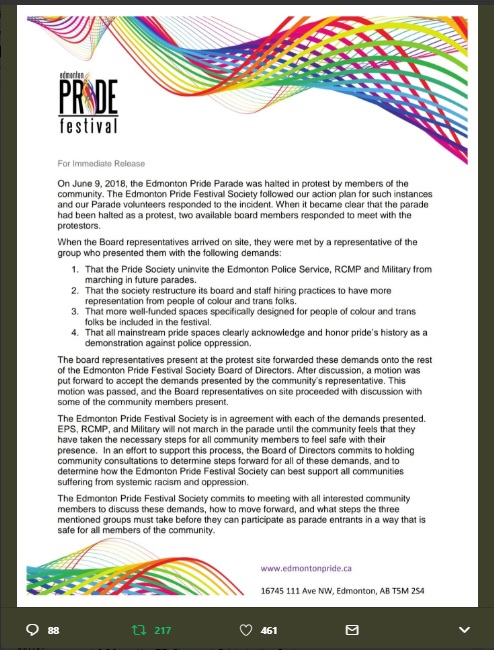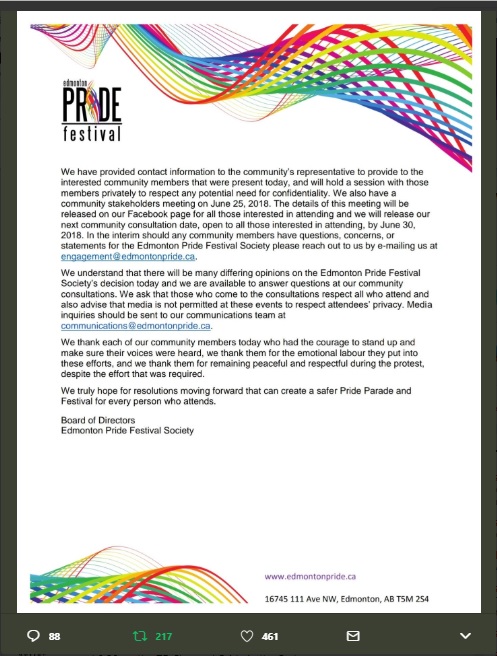After a protest held up the 2018 Edmonton Pride Parade for a half hour last weekend, the Edmonton Pride Festival Society released a statement announcing it would not invite members of the Edmonton Police Service and Canadian Military to march in next year’s parade “until the community feels that they have taken the necessary measures for all community members to feel safe with(in) their presence”. I am not a member of the affected communities.
When the issues regarding a police presence were first brought up at the Toronto Pride Parade in 2016, I was not affected. I am not a member of the LGBTQ2S+ community nor am I a Person of Colour. I have never felt unsafe in the presence of police, so I know I don’t understand where they are coming from. Because of this, I don’t judge those who have had a differing experience.
Mike Morrison, an LGBTQ2S+ community member, creator of Mike’s Bloggity Blog and more, gave an interview on X92.9 in Calgary in 2017 and I happened to catch it. He described stories he had heard from those who had felt threatened by the police in the past. I don’t know what that’s like. I’ve never felt that fear or intimidation. That doesn’t mean I get to say it has neither existed in the past nor present.
The Edmonton Pride Festival Committee also said it would commit to consulting with members of the affected communities and work with them to try to bring a reconciliation of sorts. While it means a great deal to have representatives from all communities present, in the face of these very real, to some, concerns, it makes sense to me, as an outsider, to take the time to review them.
But there’s an unfortunate side effect, politically speaking, of Edmonton Pride Festival Society agreeing to disallow members from the Edmonton Police Service and the Canadian Military to march in Pride, which some have capitalized upon in spectacular fashion.
To many (white, middle and upper income earning men and women, religious and non, specifically those aged 30-85) in Alberta, the police and military represent protection, order, fairness and justice. Additionally, the military represents not just themselves but every fallen soldier who fought for this country, for the rights of its citizens and protected those who could not protect themselves.
To many (white, middle and upper income earning men and women, religious and non, specifically those aged 30-85), both of these groups represent what our society should aspire to be and their positions in all communities should be revered, not feared.
In the minds of some (white, middle and upper income earning men and women, religious and non, specifically those aged 30-85), the decision to disallow such upstanding individuals from marching in the Pride Parade is confusing and, probably, disappointing.
It was disappointing to the leader of the Official Opposition who was, himself, along with the United Conservative Party, disallowed from marching in the Edmonton Pride Parade. And he wants to make sure Albertans understand the company he and the United Conservative Party are in when it comes to Pride. The new story is this: the problem isn’t his party, or their policies, or their lack of support for LGBTQ2S+ communities; Pride won’t even let the police and military march!
The game is politics, the strategy is to create winning narratives and has been especially crafted for Alberta voters. Side effects may include headache, upset stomach, and growing support for the United Conservative Party. If symptoms persist or worsen, see your single payer healthcare provider before 2019 while you still have one.
Categories: General


